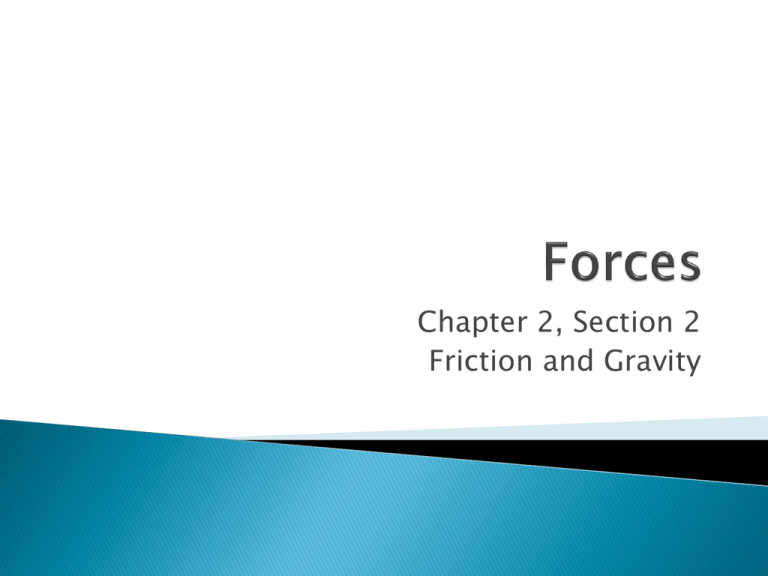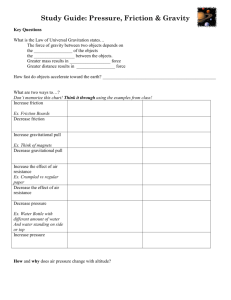Forces
advertisement

Chapter 2, Section 2 Friction and Gravity Friction = the force that two surfaces put on each other when rubbed together. The amount of friction depends upon the type of surface and how much force is used when rubbing the objects together. ◦ Ex. – rubbing hands together Static Friction – friction on objects that are not moving. ◦ Moving a heavy desk across the floor Sliding Friction – friction when two solid surfaces slide over each other ◦ Brakes on a bicycle tire Rolling Friction – when an object rolls across the surface. ◦ Ball bearing between the wheels and a skateboard Fluid Friction – when a solid object moves through a liquid (water, oil, or air) ◦ Surfer on the water Types of Friction p. 45 in textbook Gravity – a force that pulls objects toward each other Gravity pulls objects straight down toward Earth’s center. Gravity is everywhere. Sometimes also called universal gravitation. Mass and Distance Mass – the amount of matter in an object. ◦ The more the mass, the greater the gravitational force. ◦ The farther apart two objects are, the less the gravitational force. Weight – a measure of the gravitational force exerted on an object. ◦ Weight will depend upon the strength of the gravitational pull. (Earth vs. Moon) Free Fall – when the only force acting on an object is gravity. ◦ Gravity becomes an unbalanced force allowing the object to move. ◦ Near the surface of earth, acceleration from gravity is 9.8 m/s2. ◦ All objects in free fall accelerate at the same rate no matter what their mass in the absence of air. Air Resistance – objects falling through air experience this fluid friction. ◦ The larger the surface area, the greater the air resistance. ◦ As velocity increases, so does the air resistance. ◦ Terminal velocity = when the force of air resistance equals the weight of the object. The falling object falls fast enough, the upward force of air resistance becomes equal to the downward force of gravity. The forces become balanced. The object continues to fall but velocity remains constant.






